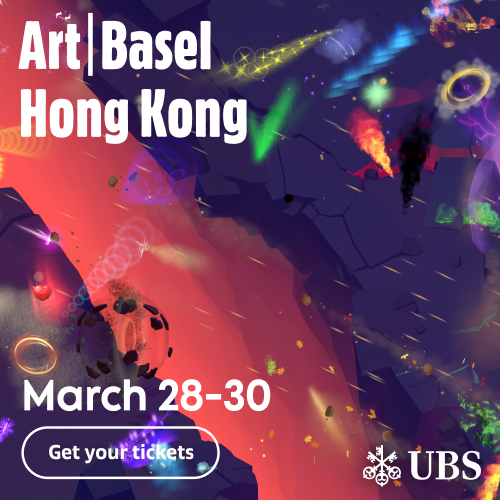Cho Yong-Ik, 1934–2023
By Cheryl Kwan

Portrait of CHO YONG-IK. Courtesy Kiang Malingue, Hong Kong.
On July 2, South Korean artist Cho Yong-Ik, a first-generation Dansaekhwa painter, died at the age of 89. One of the pioneers of Korean abstract art, Cho is best known for his colorful geometric compositions, which pushed the boundaries of the Dansaekhwa movement.
Born in Pukchong, South Hamgyong Province in 1934, Cho moved to Seoul following the Korean War. He attended the department of painting at Seoul National University and was trained under modernist painter Kim Byung-ki. Cho started his career in Informel art, exhibiting at the fourth “Contemporary Exhibition” organized by Artists Association in Seoul in 1958 and gained recognition in the 1960s, when he started participating in international exhibitions such as the Paris Biennale in 1961 and the São Paulo Biennale in 1967. Then for nearly two decades from 1974 to 1992, Cho was a professor at Chugye University for the Arts; and from 1977 to 1983, he served as the vice executive director of the Korean Fine Arts Association. While he was not a founding member of the Association of Contemporary Artists who led the Informel movement, Cho rebelled against conventional artistic practices like representational art and turned to abstraction.
During the 1970s, under the turbulent sociopolitical climate in postwar South Korea, Cho was one of the early participants of the Dansaekhwa movement, initiated by artists who were eager to reclaim their identity and heritage of the Joseon Dynasty and reconnect with spirituality. Departing from the philosophical foundation of Dansaekhwa—a blend of thoughts from Buddhism, Taoism, and Confucianism—Cho did not strictly adhere to the style and approach of the movement that often focused on the use of materials or the monochromatic tone. Unlike his peers, however, Cho experimented more with colors and textures through his meditative compositions. For example, for his Scratch series inspired by Korean pottery in the 1970s, he used his thumb to remove the top layer of paint to reveal the undertones. With these paintings, Cho explored geometric abstraction in this period, through works that depict orderly markings in the form of a grid against monochromatic backgrounds.
Entering the 1980s, Cho started creating Wave series, which features monochromatic paintings characterized by their warm colors and wide, textured strokes that create a wave-like repetition on the canva. In the 1990s, he also came up with Bamboo series, which features the recurring motif of bamboo against a neutral-colored background and uses different tones to create textured, seemingly three-dimensional bamboo. Cho took a hiatus from art after the 1990s but returned in 2016 with a major retrospective at Sungkok Art Museum. His works are collected by multiple institutions in Korea, such as the National Museum of Modern and Contemporary Art in Seoul and the Gwangju Museum of Art.
In an interview with ArtAsiaPacific in 2016, Cho said, “I want people to remember me as an honest artist.” Inspired by his own mentor Kim when studying at Seoul National University, Cho’s core philosophy was to “stay independent” and “bring out your own ideas” instead of following trends. This has shaped his practice throughout the years and eventually became part of his creative legacy as one of South Korea’s most important abstract artists.
Cheryl Kwan is an editorial intern at ArtAsiaPacific.
%20x%20135(H)%20px-03Rc-72dpi%20(2).jpg)
%20x%20200%20(H).jpg)





